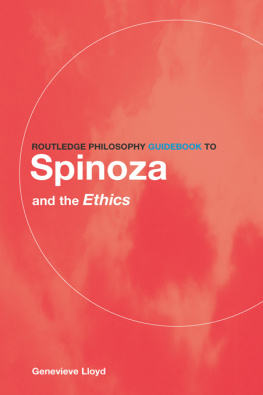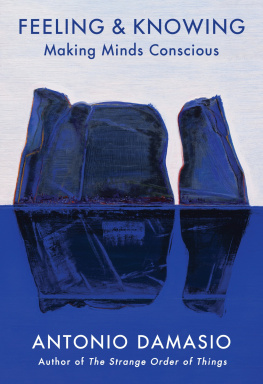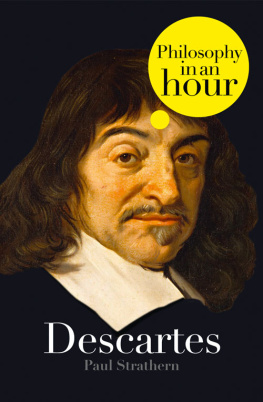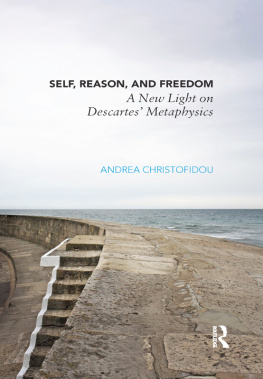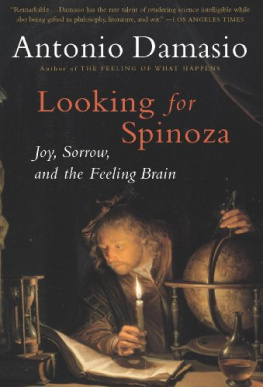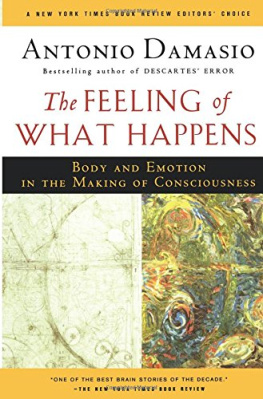Spinoza Benedictus de - Looking for Spinoza: joy, sorrow, and the feeling brain
Here you can read online Spinoza Benedictus de - Looking for Spinoza: joy, sorrow, and the feeling brain full text of the book (entire story) in english for free. Download pdf and epub, get meaning, cover and reviews about this ebook. City: Orlando, FL, year: 2003, publisher: Houghton Mifflin Harcourt, genre: Religion. Description of the work, (preface) as well as reviews are available. Best literature library LitArk.com created for fans of good reading and offers a wide selection of genres:
Romance novel
Science fiction
Adventure
Detective
Science
History
Home and family
Prose
Art
Politics
Computer
Non-fiction
Religion
Business
Children
Humor
Choose a favorite category and find really read worthwhile books. Enjoy immersion in the world of imagination, feel the emotions of the characters or learn something new for yourself, make an fascinating discovery.
- Book:Looking for Spinoza: joy, sorrow, and the feeling brain
- Author:
- Publisher:Houghton Mifflin Harcourt
- Genre:
- Year:2003
- City:Orlando, FL
- Rating:3 / 5
- Favourites:Add to favourites
- Your mark:
Looking for Spinoza: joy, sorrow, and the feeling brain: summary, description and annotation
We offer to read an annotation, description, summary or preface (depends on what the author of the book "Looking for Spinoza: joy, sorrow, and the feeling brain" wrote himself). If you haven't found the necessary information about the book — write in the comments, we will try to find it.
Abstract: Completing the trilogy that began with Descartes Error and continued with The Feeling of What Happens, noted neuroscientist Damasio now focuses the full force of his research on emotions as he shows how joy and sorrow are cornerstones of humankinds survival. One of the best brain stories of the decade.-New York Times Book Review. 30 illustrations throughout. (Philosophy). Completing the trilogy that began with Descartes Error and continued with The Feeling of What Happens, noted neuroscientist Antonio Damasio now focuses the full force of his research and wisdom on emotions. He shows how joy and sorrow are cornerstones of our survival. As he investigates the cerebral mechanisms behind emotions and feelings, Damasio argues that the internal regulatory processes not only preserve life within ourselves, but they create, motivate, and even shape our greatest cultural accomplishments. If Descartes declared a split between mind and body, Spinoza not only unified the two but intuitively understood the role of emotions in human survival and culture. So it is Spinoza who accompanies Damasio as he journeys back to the seventeenth century in search of a philosopher who, in Damasios view, prefigured modern neuroscience. In Looking for Spinoza Damasio brings us closer to understanding the delicate interaction between affect, consciousness, and memory-the processes that both keep us alive and make life worth living. Drawing on research and patients case studies, leading neurologist Damasio (U. of Iowa Medical Center), author of Descartes Error, deconstructs the life and thought of this radical 17th century Dutch-Jewish philosopher, who anticipated modern views on mind-body unity, as a springboard for his model of the biological basis for emotions and feelings. This general audience treatment includes illustrations, a glossary, and chronology. Joy, sorrow, jealousy, and awe-these and other feelings are the stuff of our daily lives. Thought to be too private for science to explain and not essential for understanding cognition, they have largely been ignored. But not by Spinoza, and not by Antonio Damasio. Here, in a humane work of science, Damasio draws on his innovative research and on his experience with neurological patients to examine how feelings and the emotions that underlie them support human survival and enable the spirits greatest creations. Looking for Spinoza reveals the biology of our sophisticated survival mechanisms. It rediscovers a thinker whose work prefigures modern neuroscience, not only in his emphasis on emotions and feelings, but also in his refusal to separate mind and body. Together, the scientist and the philosopher help us understand what were made of, and what were here for. Based on laboratory investigations but moving beyond those to society and culture, Looking for Spinoza is a master work of science and writing. Antonio Damasio, widely recognized as one of the worlds leading neuroscientists, has for decades been investigating the neurobiological foundations of human life. In Descartes Error he explored the importance of emotion in rational behavior, and in The Feeling of What Happens he developed the neurobiology of the self. Damasios new book on feeling and emotion offers unexpected grounds for optimism about our survival and the human condition
Spinoza Benedictus de: author's other books
Who wrote Looking for Spinoza: joy, sorrow, and the feeling brain? Find out the surname, the name of the author of the book and a list of all author's works by series.


